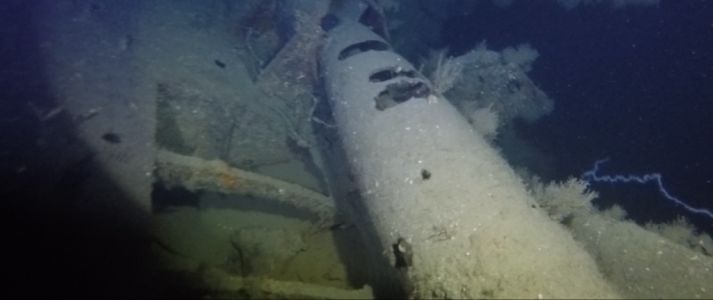
UC-55 wreckage. Photo: Jacob Mackenzie
Last Friday, July 21, divers dove 110m (361ft) beneath the waters off the Shetland Islands, about eight miles south-east of Lerwick, and positively identified the wreck of the SM UC-55, a German Type UC II minelaying submarine that was sunk during World War I in 1917.
The wreck of UC-55 was first discovered by side scan sonar in a UK hydrographic office survey on 3 July 1985. The survey was not able to identify the wreck. Now, 106 years after its sinking and 38 years after the wreck was first discovered, divers from the Stromness boat Valhalla have identified the submarine in almost the same condition as she was left.
Hazel Weaver, owner of the Valhalla, told The Shetland Times that “the UC-55 has an amazing story behind it. [The year] 1917 in Lerwick was a very busy time for the port. There was actually more traffic in Lerwick than in London.
“The German U-boats knew that and were very active around Lerwick during that time. Mostly that activity was mine laying in the convoy routes, but they also did classic torpedo attacks on warships and freighters around Lerwick.
“It’s a piece of history that we were very interested in. These U-boats that sank mostly sunk in quite deep water beyond recreational diving depth, so to find one just within diving depth was very exciting.”
UC-55 had a displacement of 415 tonnes (408 long tons) when at the surface and 498 tonnes (490 long tons) while submerged. She had a length overall of 50.52 m (165 ft 9 in), a beam of 5.22 m (17 ft 2 in), and a draught of 3.61 m (11 ft 10 in).
On September 29, 1917, the UC-55 was forced to surface due to a mechanical failure and was sighted by the armed trawler Moravia and the destroyers HMS Tirade and HMS Sylvia, which sank the sub with shell fire and depth charges. Of the submarine’s crew, 10 were killed and 17 were taken prisoner.
Thanks to Alaric Bond for contributing to this post.
